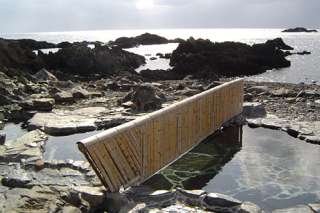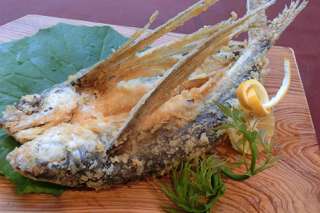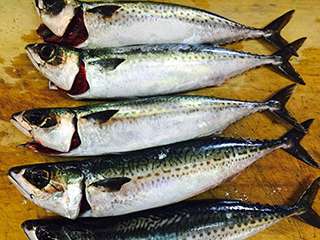
GUIDE Kyushu: Yakushima Island Turtle Hatching, Kagoshima by JNTO on 12 February 2019
Located off the southern coast of Kyushu’s Kagoshima Prefecture, Yakushima is a mountainous island famous for its moss-covered subtropical forest that contains some of Japan’s oldest living cedar trees – some over 7,000 years old! Parts of the forest are listed as a Natural World Heritage Site, and contains plenty of trees over a thousand years old, called yakusugi.
Most visitors come to the island to hike through this maze of unspoiled forest, which is also famous for its high rainfall. With its thick canopy and moss-covered trees, it’s no surprise that its fairy-tale-like landscape has been a source of inspiration for anime like Studio Ghibli’s “Mononoke”.


Away from the mountainous interior, however, is another of Yakushima’s attraction: its miles of untouched coastline where endangered loggerhead and green turtles nest. Sea turtles reproduce slowly – they breed every 2-3 years after they hit maturity between 25 and 45 years old – and the survival chance of hatchling turtles can be as low as 1 in 5,000.

When do turtles nest?
Yakushima is the main North Pacific nesting site. Female turtles will return to the place they were born – some 25 to 30 years prior – on Yakushima every year between May and August. Most of them end up on Nagata Inaka Beach on the northwest of the island. They would come ashore several times over the course of a few months to lay clutches of about 100 eggs. The incubation period is between 45 to 70 days, depending on the temperature of the sand.
Because the turtles are active in the cover of night, you cannot enter Nagata Inaka Beach at night – from 7.3pm to 5am – between the beginning of May to the end of August. You can only enter the beach on an official tour bookable via Yes Yakushima. However, you can stroll along the beaches in the early morning hours when you can see fresh turtle tracks. Turtles lay their eggs above the high-tide line, so avoid walking around the area.
Turtle-watching eco tours are available throughout the summer months – in early summer you can witness the egg-laying process, while in late summer thousands of hatchlings make their way into the sea.

Yakushima is also famous for its two unique seaside hot springs: Yudomari and Hirauchi, which is only accessible at low tide. These natural rock pools are open to the elements, and a donation of 100 yen is requested. For a more traditional hot spring experience, the family-run Soyotei ryokan – located next to Inaka beach – offers tatami rooms and onsen baths.

What food is popular on Yakushima?
It’s no surprise that seafood is a mainstay of Yakushima cuisine. The most commonly served dish here is flying fish, called tobiuo, which are caught year-round although the peak season is from late spring to early summer. You can try it as sashimi, grilled, or deep-fried. You can also get surimi, which is minced flying fish normally served as deep-fried patties.

Another popular fish is mackerel (saba) which can be eaten as sashimi or sushi. However, it’s also a fish that spoils quickly, so to preserve it, fishermen break the fish’s neck as soon as it’s caught – this is called ‘broken-necked mackerel’ (kubi ore saba) which is a Yakushima delicacy commonly eaten as sashimi.


There is another Yakushima method of preserving the mackerel – smoked and dried at one of the island’s smoking plants (some are over 200 years old). These are normally sold as souvenirs; dried mackerel is shaved or ground and used as noodle stock.
Thanks to its ideal weather, Yakushima produces more Ponkan and Tankan oranges than any other place in Japan. Harvested during winter, you can sample them in many forms including juices, cookies, jams, and cakes.

Similar to other places in Kyushu, shochu is a popular drink here. Made with sweet potato, you can try this liquor as oyuwari (with hot water), mizuwari (with cold water), or on the rocks. The two main breweries are Mitake Brewery and Hombo Brewery, which offers distillery tours at their Anbo factory.
How to get to Yakushima for turtle watching?
Yakushima is served by several airlines that connect the island to Kagoshima (35 mins), Fukuoka (1 hour), and Osaka (1.5 hours). You can also get from Kagoshima Port to Yakushima’s Anbo Port via Toppy Jetfoil in about 2 hours.
Date: Anytime; Turtle watching season is from May to August
Time: Anytime; access to turtle-watching beach restricted from May to August, with guided tours from 7.30pm to 11pm
Entrance fee: Turtle-watching tour 6,000-8,000 yen per person; minimum 4 guests per night
























































